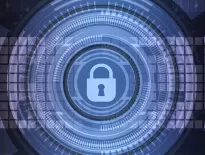Asynchronous communication, which is time-independent, has numerous benefits for online course platforms and students.

Students of online courses can follow asynchronous video where they want, when they want and on their chosen device. Teachers can record their online lessons, and students can view the videos at a later time.
Students have more control over their learning and can learn at their own pace with asynchronous video. Asynchronous communication also gives online course platforms the opportunity to scale and grow. Widespread changes over the past year have made asynchronous communication more important than ever.
What is asynchronous communication?
People who attend a meeting at work need to be present in a specific location at exactly the same time to communicate. This is an example of synchronous communication.
Other examples of synchronous communication include live online classes via video conferencing technology, open discussion sessions and live events.
Asynchronous communication is when two or more people communicate without being present at the same moment in time.
Internet and technological updates have made asynchronous communication possible by using various tools, such as messaging tools, project management tools and asynchronous video.
Differences between asynchronous video and synchronous video
Any form of communication that takes place with some delay, such as email and recorded video, falls into the asynchronous communication category
Videos in asynchronous form of communication include video voicemail, video messages, and screen shares. These pre-recorded videos are easy to consume and offer more control than synchronous video.
Videos in the synchronous video category include video conference calls where two or more people are present at the same time. Video conference calls have become the norm for professionals working from home during the pandemic.
How online course platforms can grow through asynchronous video
Before the pandemic, limitations of text-based discussions resulted in more online educators experimenting with synchronous video-based discussions to help establish immediacy and address student questions in a timely manner.
Online Educators also allowed students to benefit from group problem-solving and collaboration.
Despite these benefits, the pandemic revealed some of the limitations of synchronous communication, including eye strain, mental exhaustion, technical issues, and students talking over each other.
Constraints with synchronous meetings and text-based discussions led online educators to explore alternatives, such as the use of asynchronous videos.
Asynchronous videos can be used in online courses as an instructional tool in many different ways like – recorded lectures, how-to videos, feedback on assignments etc.
Once asynchronous videos have been created, these videos can be used many times without any additional work, except for getting feedback and improving them.
There is also no big difference whether five people or five hundred people watch asynchronous videos as the content produced works to the same extent in both cases. Which means is that online course platforms can easily scale their operations and profits by putting in efforts to produce high-quality asynchronous videos.
Benefits of asynchronous communication for online course platforms

There are numerous benefits of asynchronous communication for online course platforms, including flexibility and affordability.
Flexibility: Students can access asynchronous videos whenever they want to from any mobile device and consume online course material at their own pace. Students don’t have to learn at a fixed time or only when an educator is physically available to instruct them.
Affordability: Asynchronous learning is usually more affordable than synchronous learning. More students online courses can register, lower the cost of the course per head and a large number of students can view asynchronous videos at the same time.
Pacing: All students learn at a different pace and while one may take an hour to understand certain material, another may take a day.
Asynchronous video allows students to learn at a pace that suits them. Students can speed up a video, pause when necessary and rewind the video to review certain material or can re-watch an entire video if they have difficulty understanding the material.
Personalize and optimize the learning experience: Students have more ownership in asynchronous format over their learning than when they have to follow the schedule of a teacher.
Students and online educators can personalize their learning experience and take time to process and practice.
Collaborative tools: Even though students are physically separate, so many different tools still allow for online sharing when learning asynchronously. Students may be even more prepared to collaborate asynchronously than when they are studying in a traditional classroom.
How a video hosting solution can help online course platforms with asynchronous video
Hosting an online course that uses many videos is a bigger task than creating the videos.
Videos take up space on a website server and can hinder the speed of servers which has an impact on video quality as well as user experience.
Using a video hosting platform offers many benefits such as quality, speed, storage, security and video analytics.
Schedule video streaming: Asynchronous communications also include live streams and broadcasts delivered in a one-to-many setting.
A live streaming feature is often included in video hosting plans. Copies of a stream go to a media library where it is safe and ready to be enhanced with different features such as on-video annotations.
Broadcast a course at your convenience: Broadcasting and delivering lectures to many students is possible and they can also be made instantly available with video on-demand (VOD).
Video on-demand means they can be accessed after a live broadcast has taken place. Asynchronous video communications offer the same ability to support learning both through pre-recorded videos and live video streams that include a video of a presenter, screen shares, etc.
Host webinars: An asynchronous video platform not only allows online course platforms to deliver private video communications to a live audience, but allows students to record, share, search and view on-demand videos in a library.
This keeps your videos and information secured and accessible to the right people as video hosting platform have security features that allows online courses to figure out if foul play has taken place.
Host videos: It can be very challenging for online course platforms to categorize, store and share videos because they usually have so many of them.
Hosting videos in one central location allows students undertaking online courses to easily search and access video courses. Online courses often have an overwhelming amount of video course content.
Using a video hosting platform offers the opportunity to organize videos and to manage users with access permission for online course platforms.
RecTrace: Best asynchronous video screen recorder tool for online courses
Creating videos asynchronously is easy and screen recording software makes it possible to show step-by-step instructions.
Cincopa’s RecTrace Chrome extension allows educators to screen record videos with face-cam and voice overs.
Online educators can record personalized training, support, and educational visual content for students and staff. There is no expiration date on these videos and they can be played on mobile and desktop.
RecTrace offers the option of recording a browser tab, an entire screen or only a camera. It is also possible on RecTrace to switch between multiple cameras, change an audio source and select the desired video resolution.
Students can access course recordings at any time and educators can use an online video course template to create a whole video gallery of recordings.
Conclusion
Asynchronous learning occurs without educators and students having to be in the same place at the same moment in time. This type of learning offers many benefits for students taking online courses.
Students can view videos, do assignments and take exams without having to attend physical lectures and sit for exams at specific times, therefore eliminating the constraints of a physical location.
Online course platforms benefit from using asynchronous video because it allows them to scale their efforts and grow in a time-independent way. Using video hosting platforms allows online courses to do this best by addressing issues like quality, speed, storage and security.









